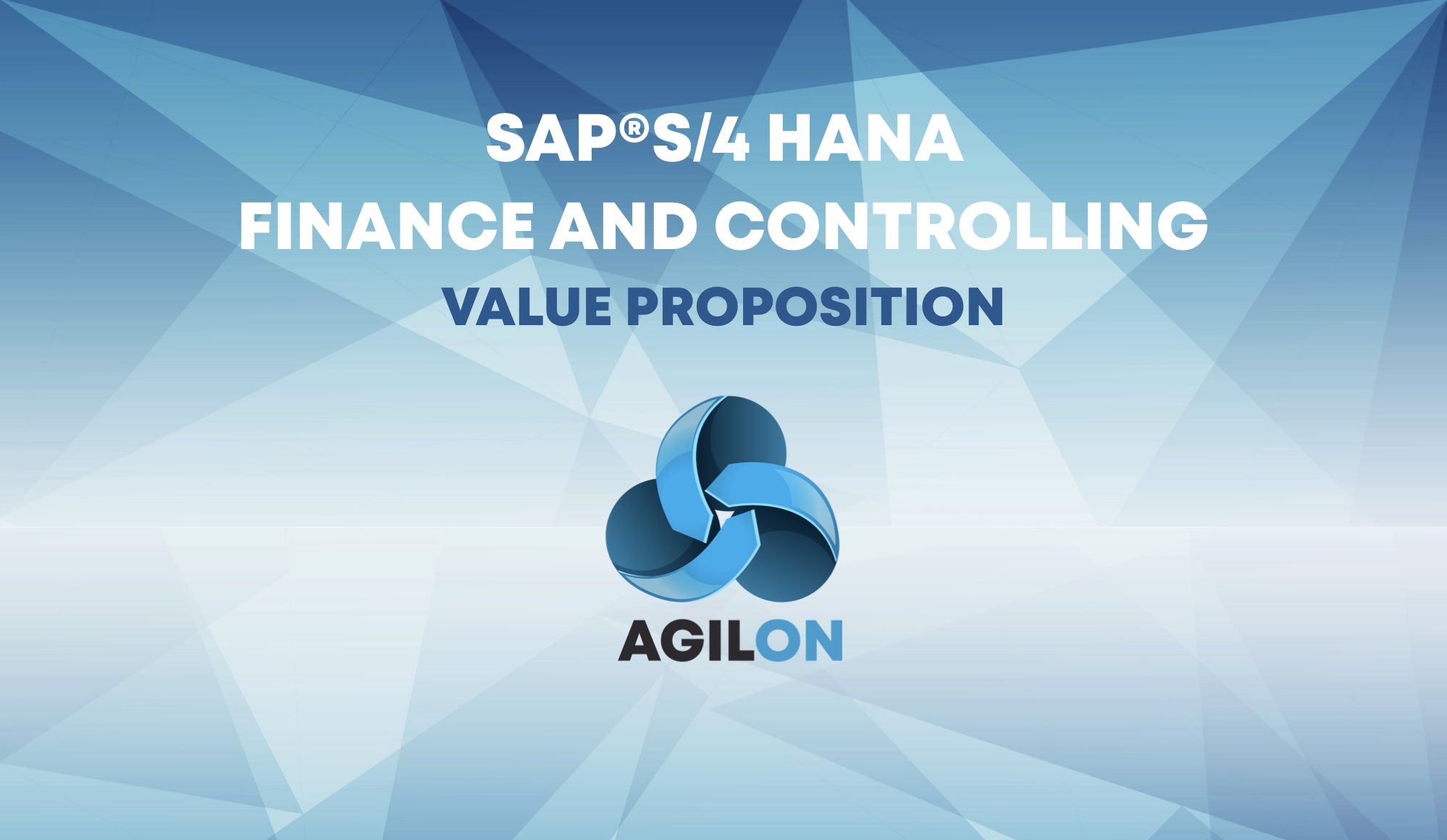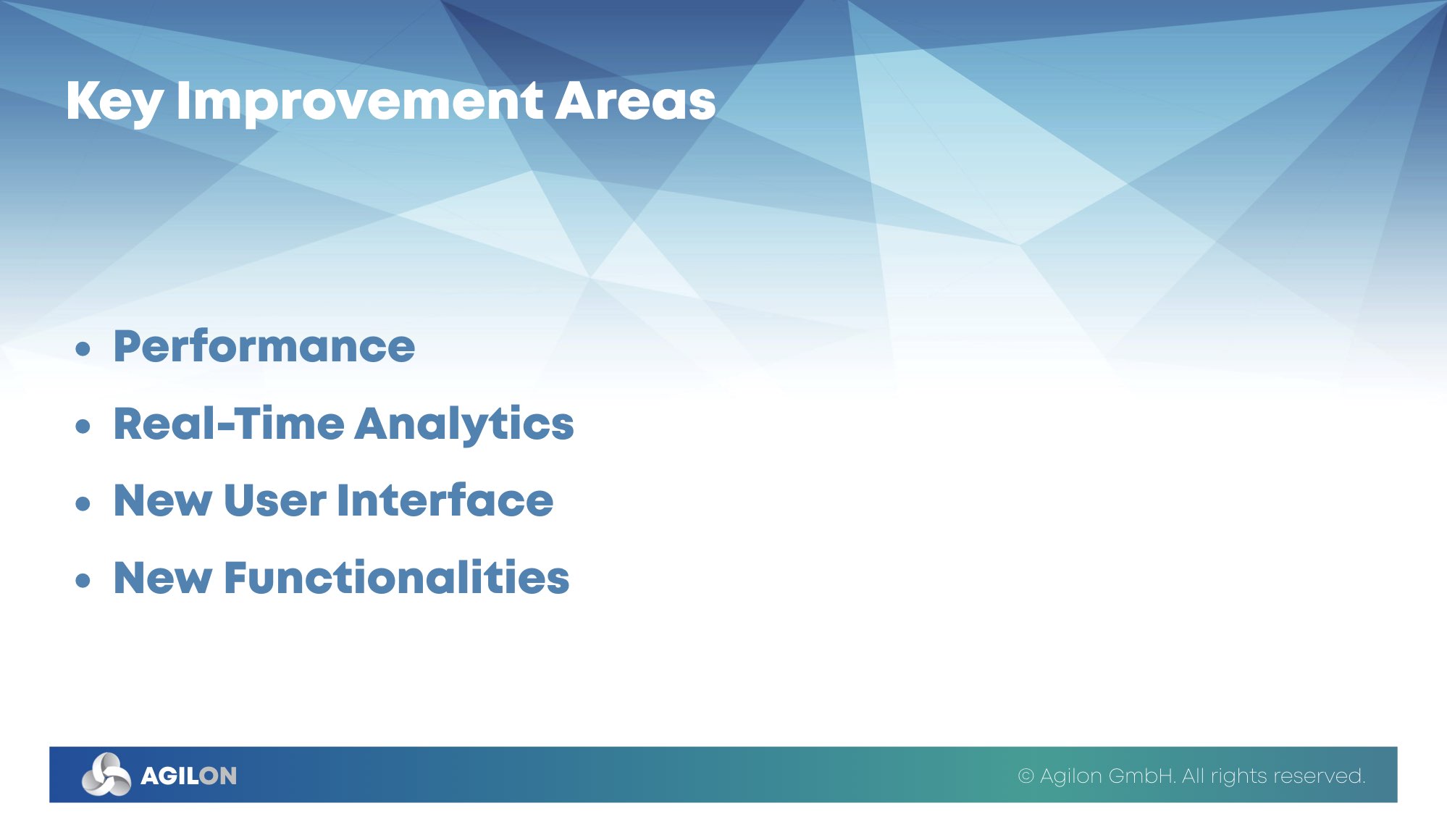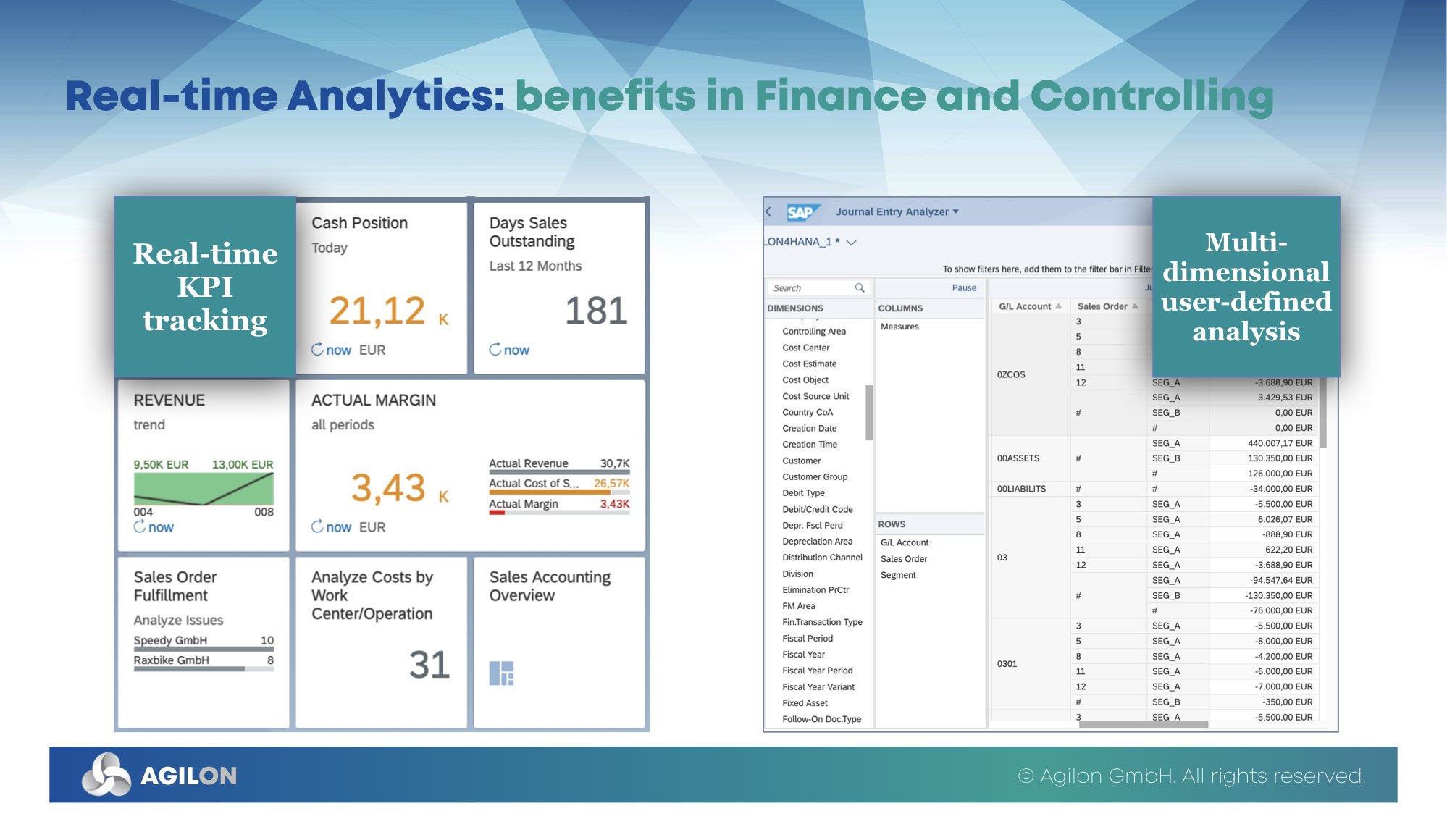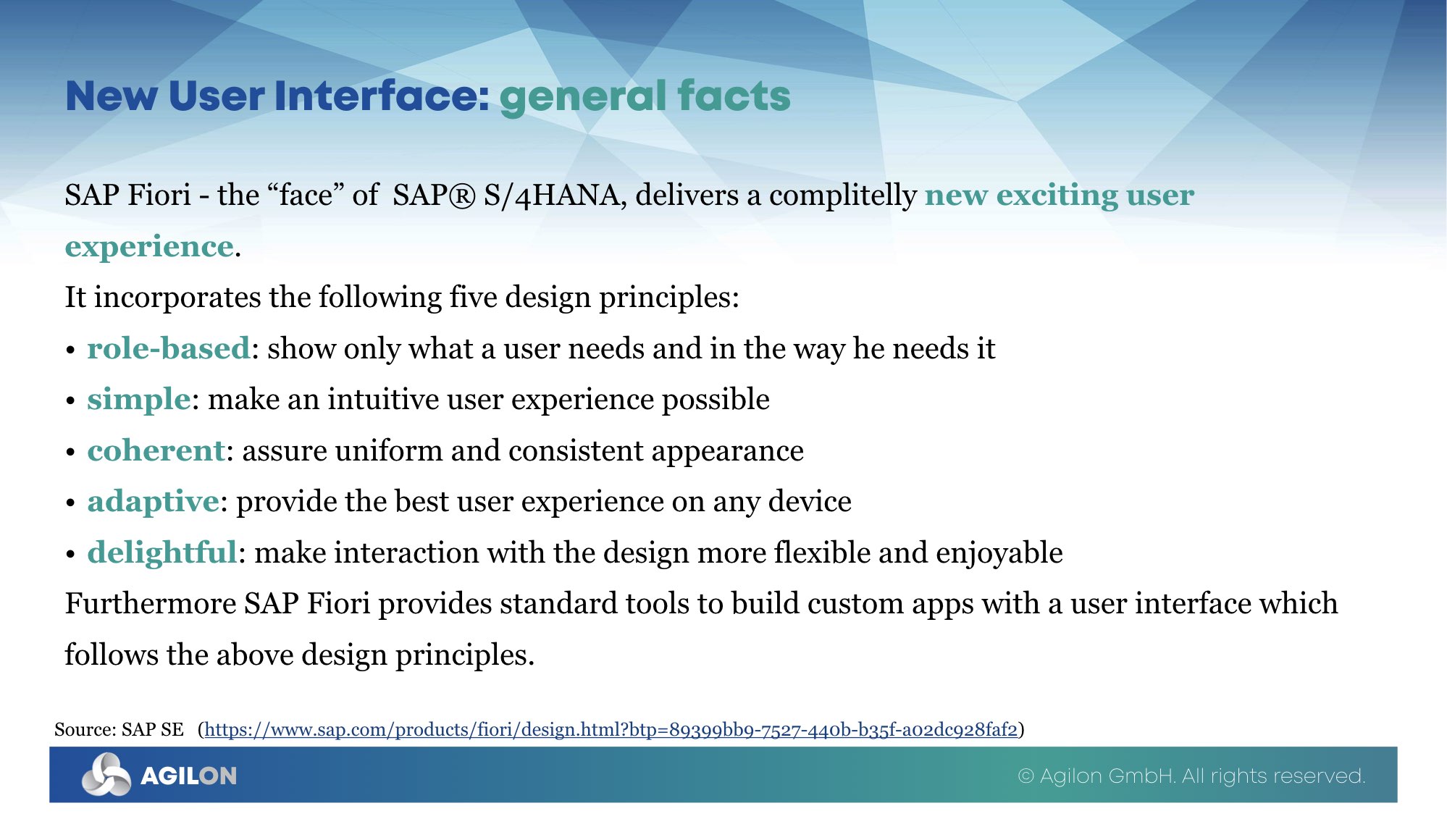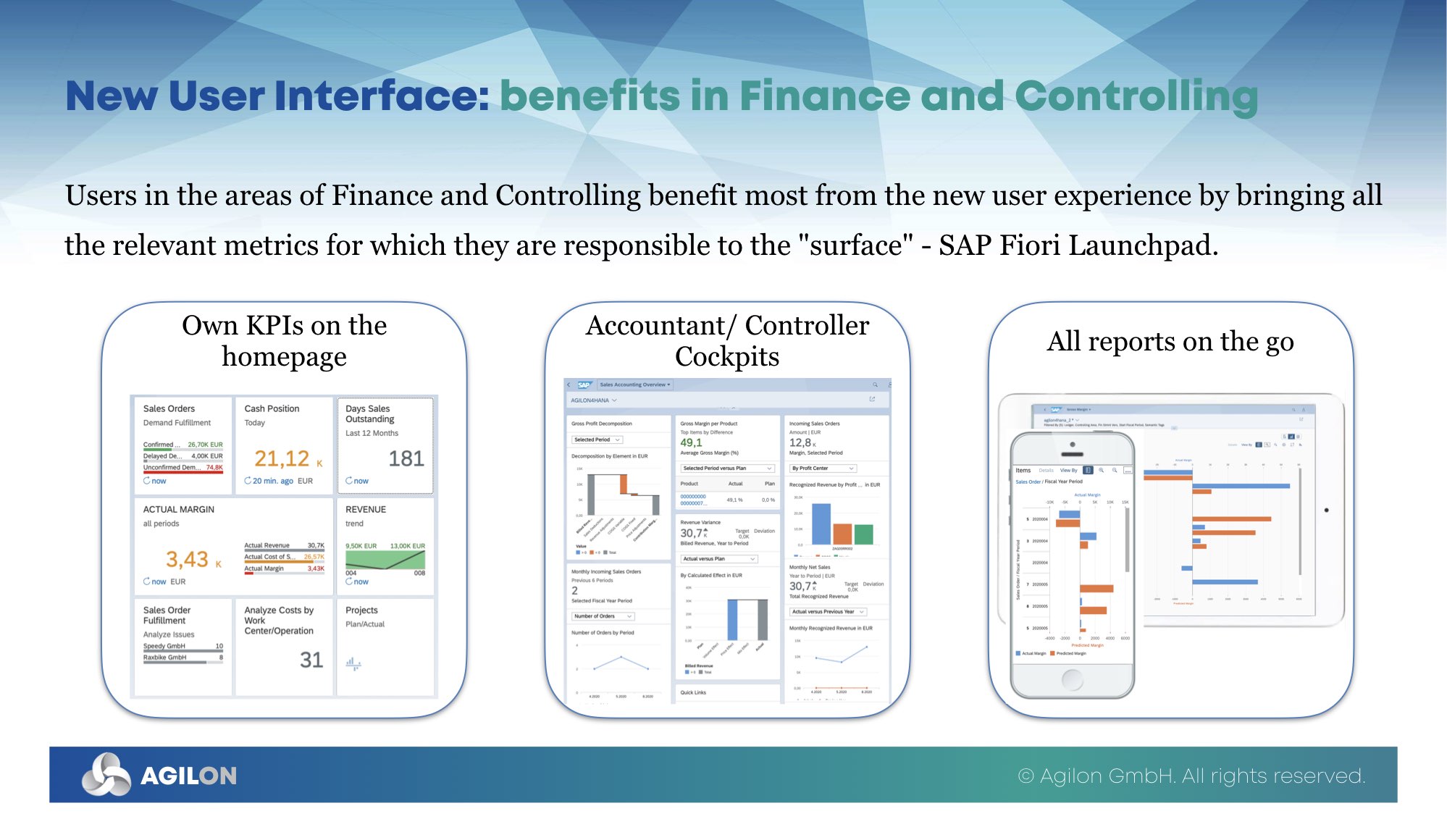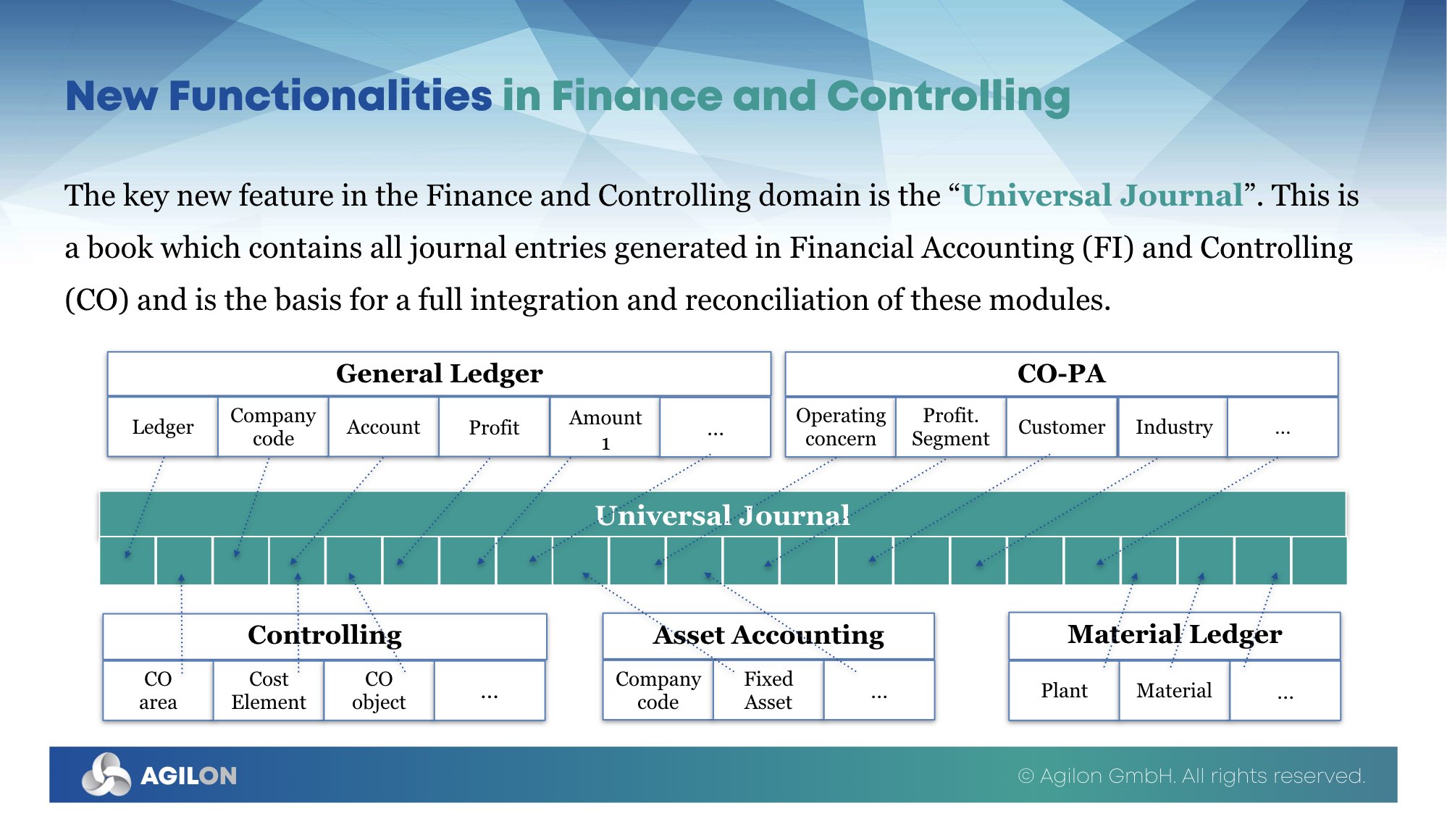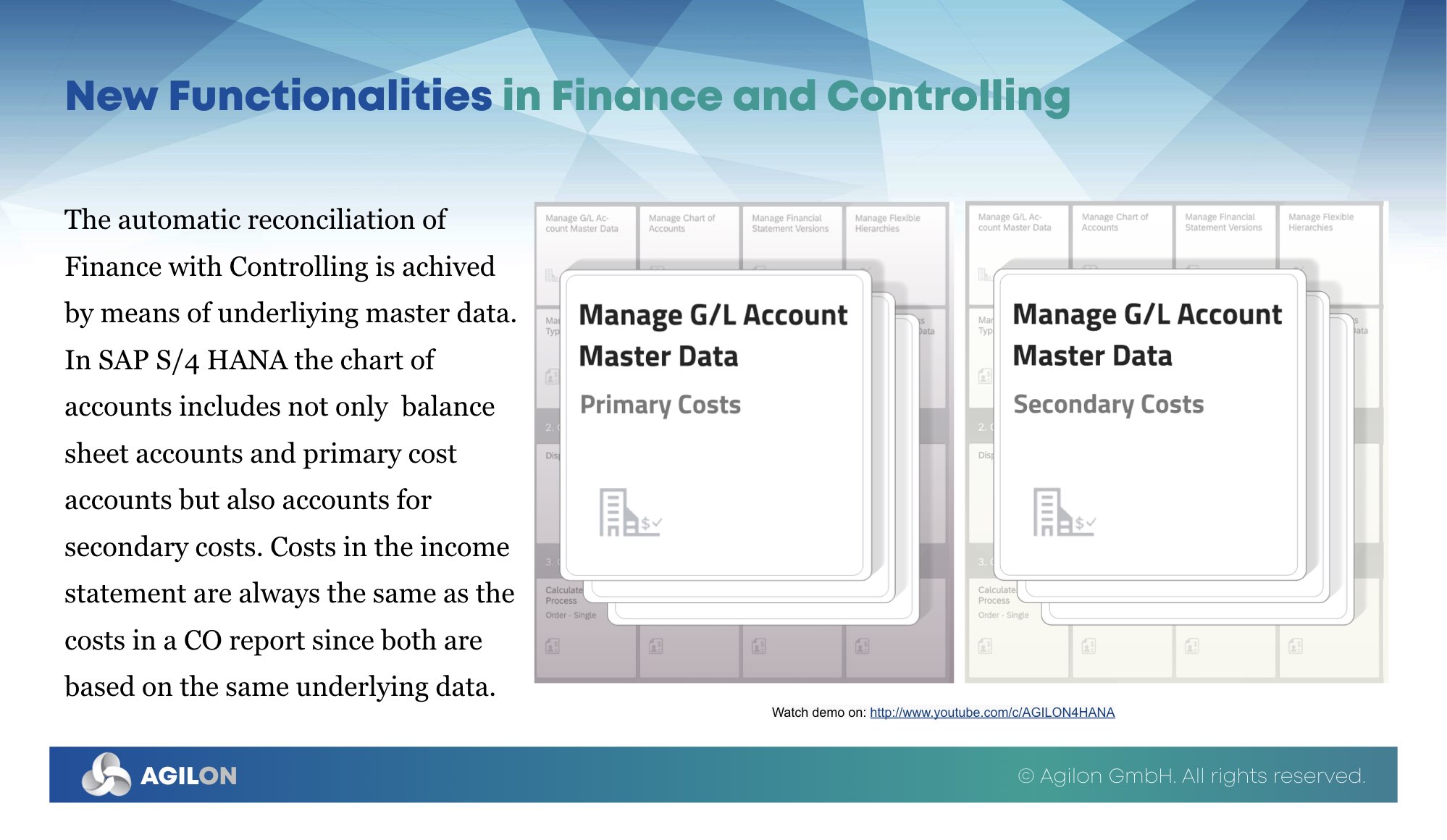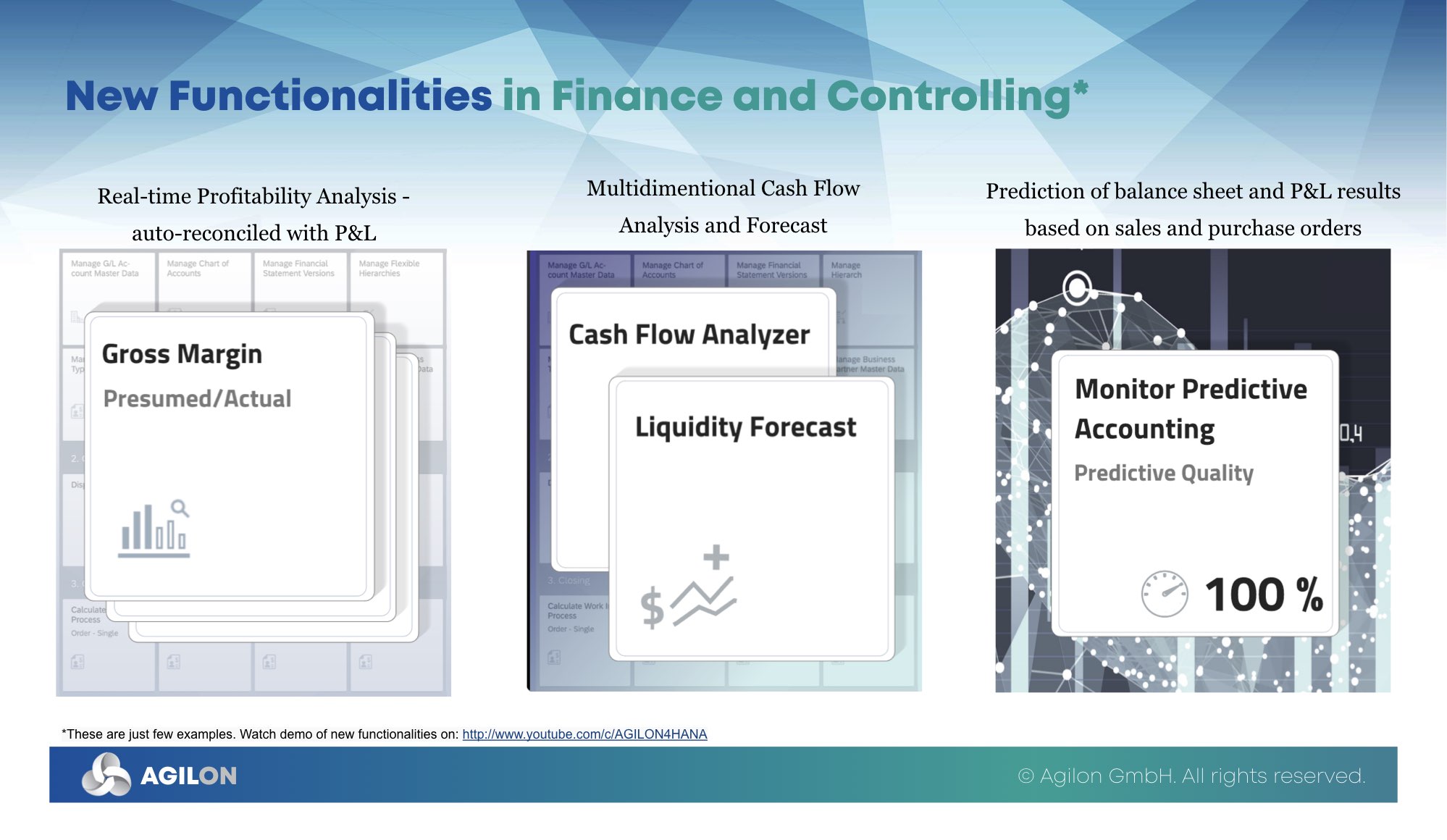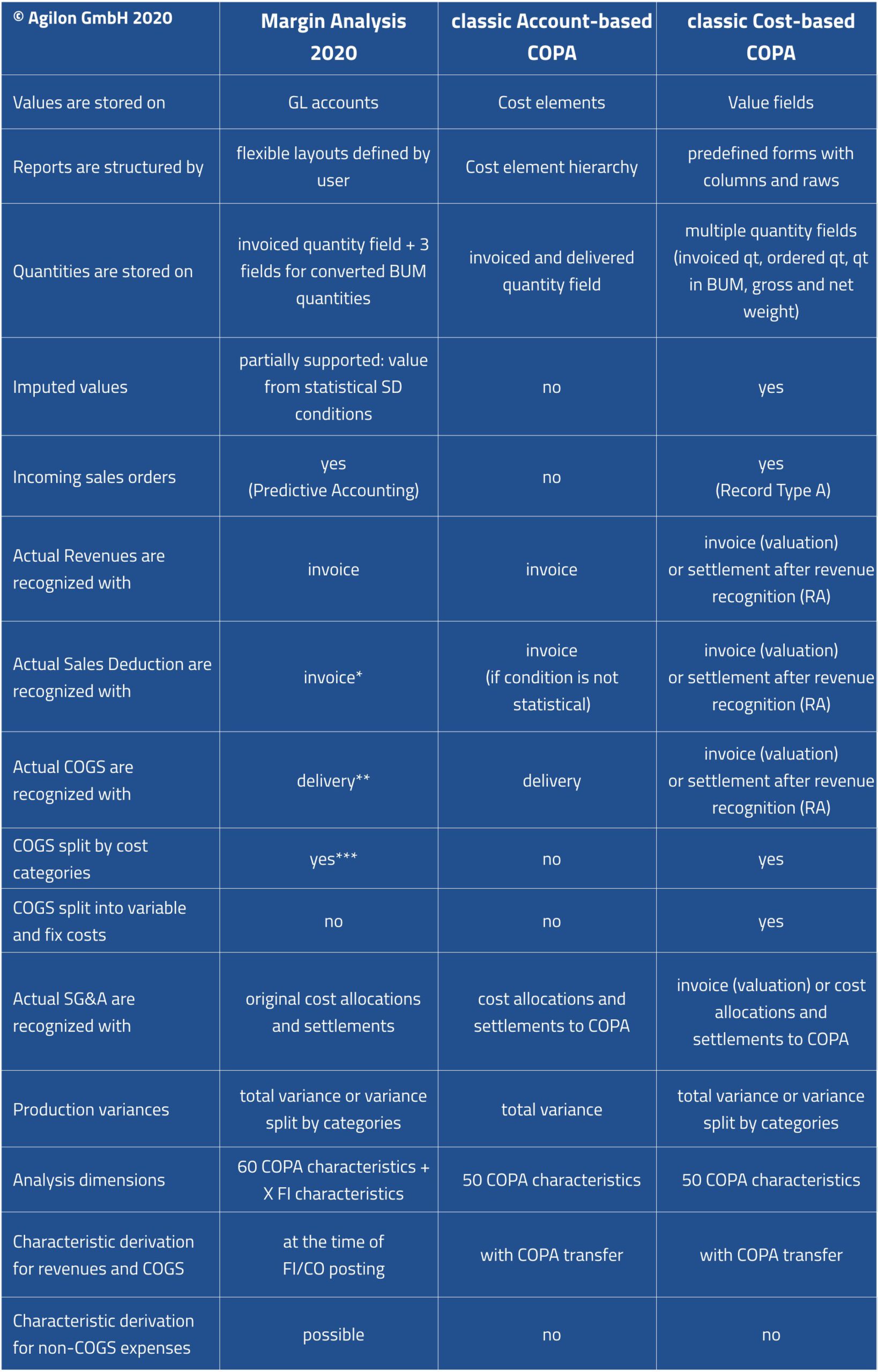Margin Analysis in SAP S/4 HANA
The SAP SE’ development strategy for SAP S/4 HANA Line of Business Finance focuses on three main goals: permanently reconciled Finance and Controlling, real-time-view of key business metrics, and accelerated financial closing and reporting.
Following this strategy, the Profitability Analysis has been re-designed and extended with new features. As per the current SAP S/4 HANA release 2020 there are two options available for Profitability Analysis:
(classic) costing-based CO-PA
which structures the profitability report according to value fields and allows imputed valuation which does not reconcile with Financial Accounting, and
(new) Margin Analysis
which is based on account-based COPA and is fully reconciled with Financial Accounting. It supports real-time derivation of COPA and FI characteristics and so addresses the needs of both – managerial and legal reporting.
Margin Analysis has evolved over the past releases, and SAP SE continues to conduct new developments in this area.
How does Margin Analysis differ from the classic cost-based and account-based COPA?
* Statistical conditions are supported starting from SAP S/4 HANA 1809
** Starting from SAP S/4 HANA 1809 it is possible to delay the cost of goods sold until the invoice is posted if there is a time gap between delivery and invoice with the new solution SAP Revenue Accounting and Reporting add-on
*** Starting from SAP S/4 HANA 1610 there is a new functionality which allow to split COGS into multiple accounts in accordance with the relative weight of the assigned cost components. In sell-from-stock scenarios the COGS split is based on the material’s valuation price at the time of the goods issue. In drop-shipment scenarios the COGS split is based on the amount in the supplier invoice.
How is the permanent reconciliation between Margin Analysis and Financial Accounting achieved?
During conversion to SAP S/4 HANA all characteristics of the operating concern are created as columns in the universal journal and all costs elements – primary and secondary are converted to GL accounts.
When a profitability analysis relevant document is posted, COPA characteristics are derived and stored along with values on GL accounts in the Universal Journal.
The relevant documents are invoices, deliveries, actual cost allocations and settlements, and eventually primary expense postings. They update actual values in the Standard Ledger(s) in the Universal Journal.
The relevant documents for predicted values are sales orders. They update Extension Ledger in the Universal Journal.
The Universal Journal is the “single source of truth” for internal (managerial) and external (legal) reporting. It is the common data source for both – the Financial Income Statement and Margin Analysis reports.
How can I apply Margin Analysis in SAP S/4 HANA?
The new Margin Analysis is supported by several new Fiori apps such as e.g:
Incoming Sales orders – Predictive Accounting: analyses predicted sales order results by multiple dimensions,
Gross Margin – Presumed/Actual: analyses and compares predicted, actual and plan values by multiple dimensions,
Market Segments – Plan/Actual: analyses and compares actual and plan values by market segments,
Functional Areas – Plan/Actual: analyses and compares actual and plan values by functional areas,
Display Line Items – Margin Analysis: view journal entry line items that are relevant for margin analysis. You can filter, sort, and group the items based on various criteria.
